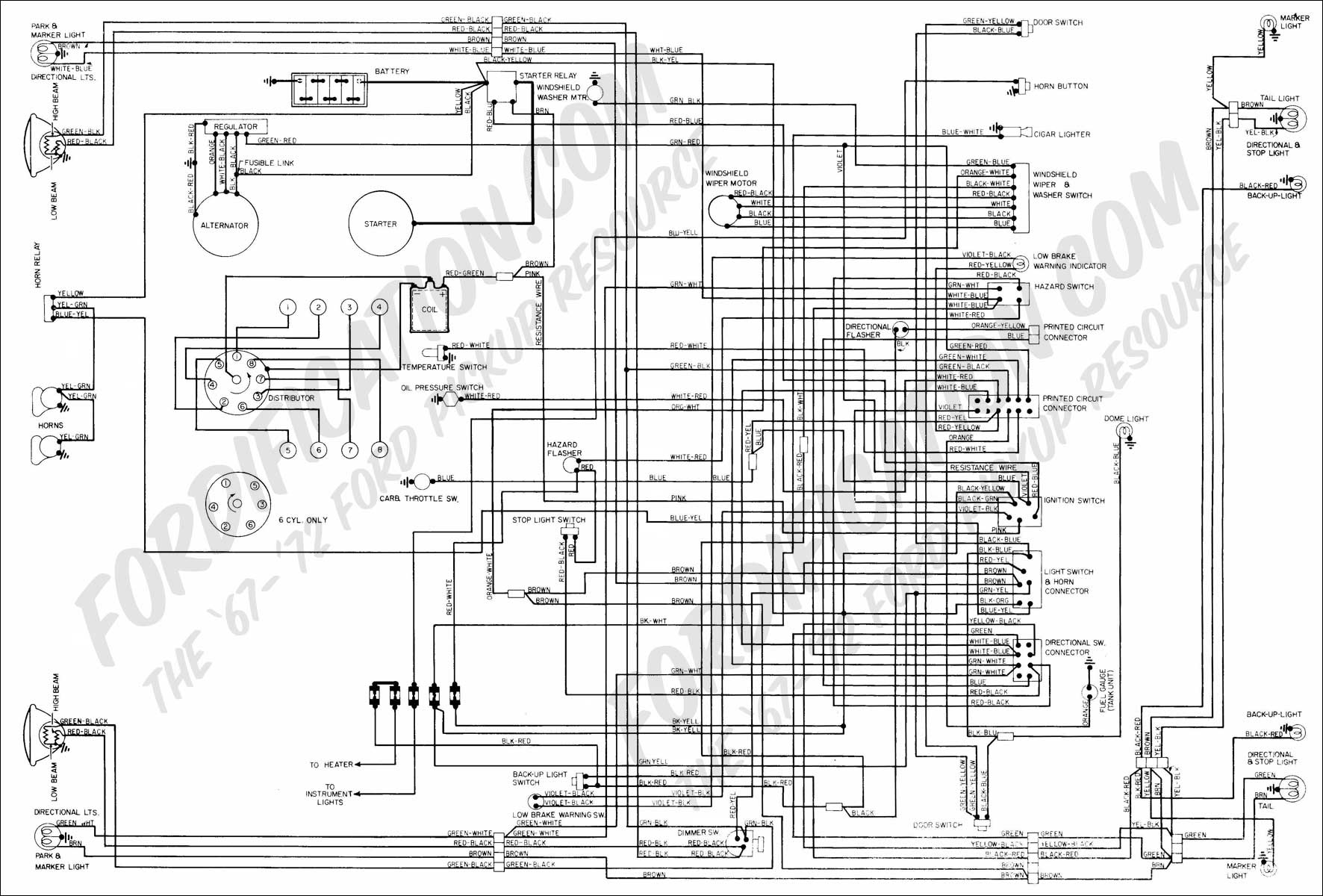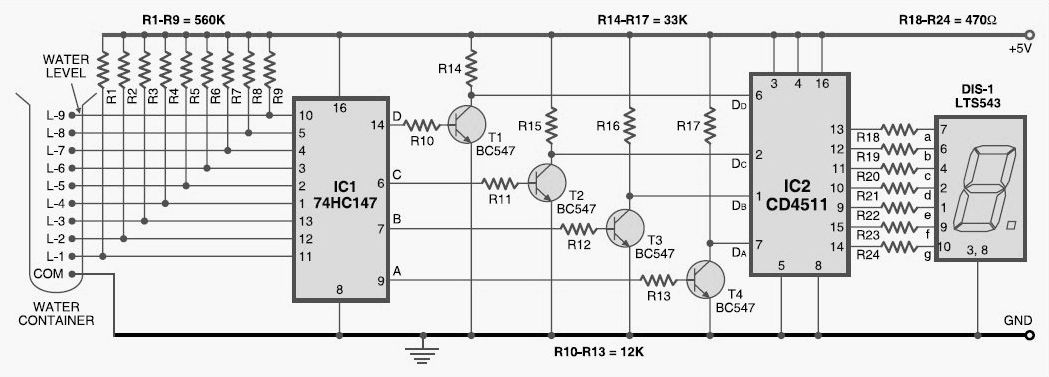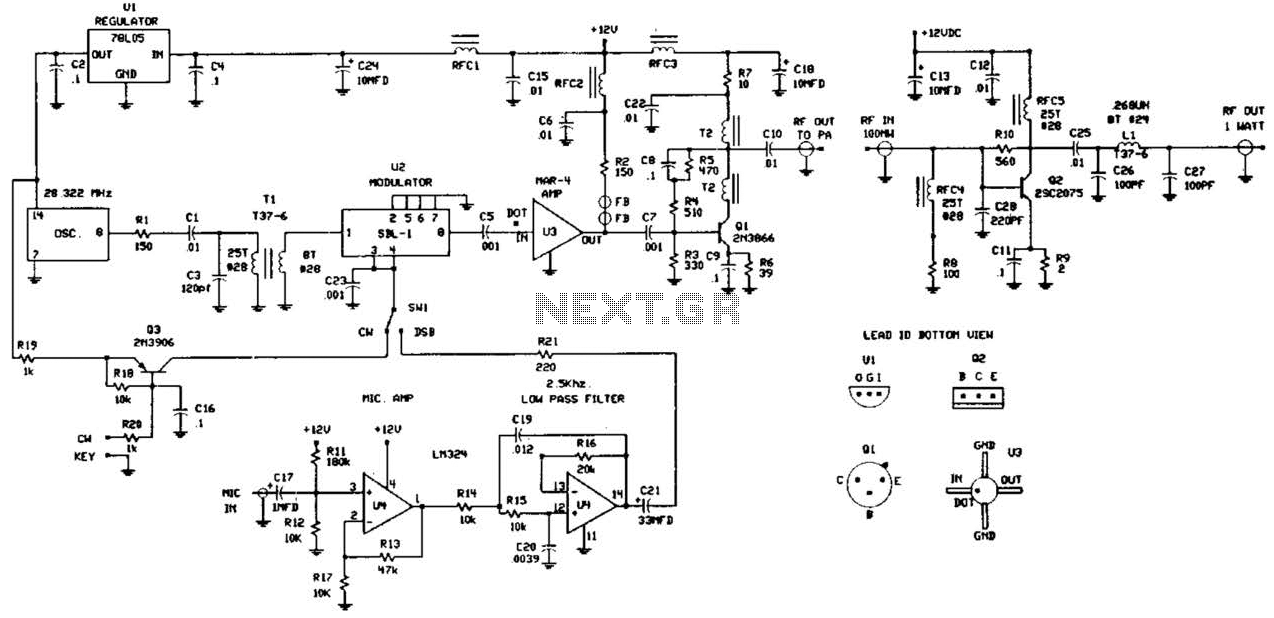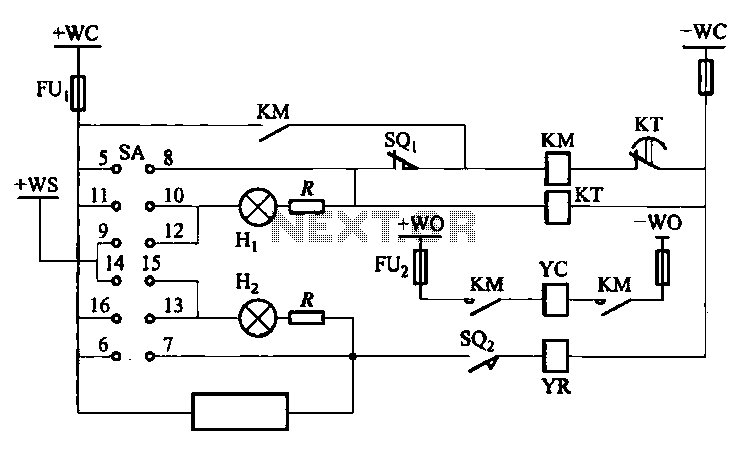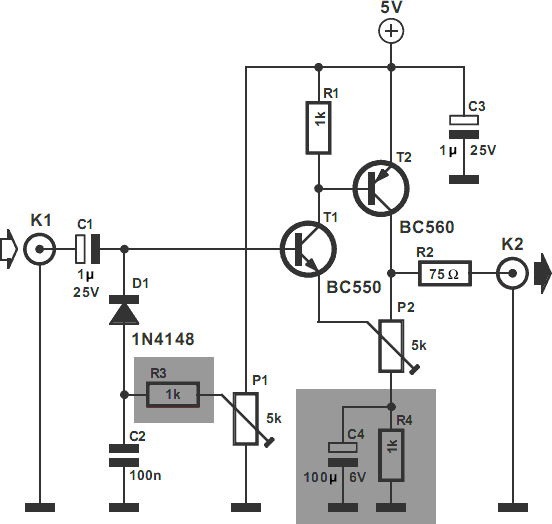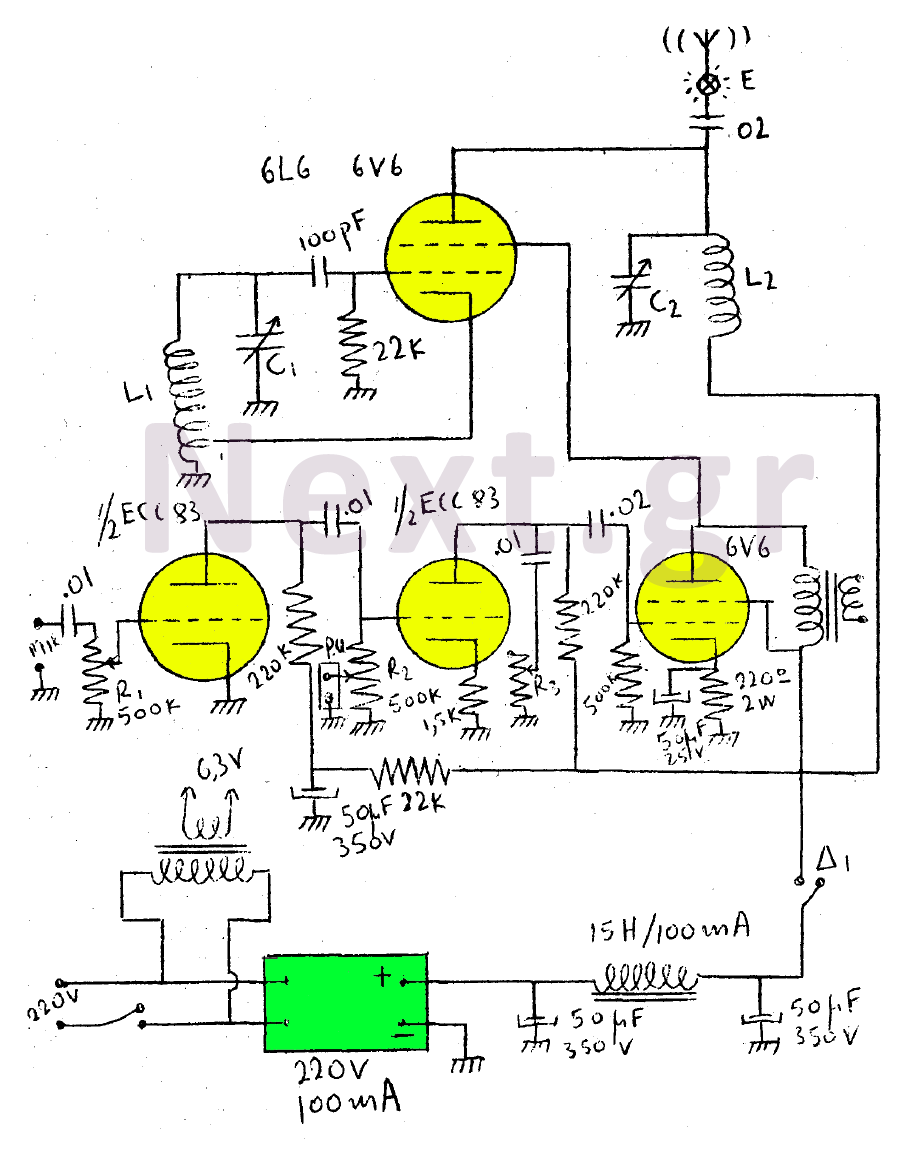
MOSFET LF2810 IC For 2W RF Amplifier Circuit diagram
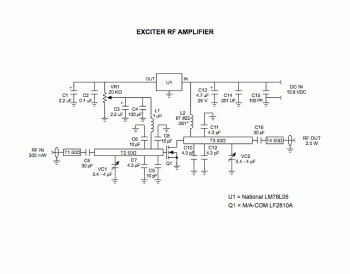
This circuit illustrates a 2W RF amplifier based on the M/A-Com LF2810A MOSFET. The transistor is rated for 10 watts at 28 volts.
The 2W RF amplifier circuit utilizing the M/A-Com LF2810A MOSFET is designed to amplify radio frequency signals efficiently. The LF2810A is a high-performance transistor capable of handling up to 10 watts of output power, making it suitable for various RF applications.
The circuit typically includes several key components: the MOSFET itself, biasing resistors, input and output matching networks, and power supply connections. The input matching network is crucial for maximizing power transfer from the source to the transistor, while the output matching network ensures that the amplified signal is efficiently delivered to the load, minimizing reflections and losses.
Biasing is essential to set the operating point of the MOSFET, ensuring it operates in the desired region of its characteristics for linear amplification. Resistors are used to establish the proper gate-source voltage, which controls the conduction of the MOSFET.
The overall design may also incorporate decoupling capacitors to filter out unwanted noise and stabilize the power supply, enhancing the amplifier's performance. Thermal management strategies, such as heat sinks, may be included to dissipate heat generated during operation, ensuring reliability and longevity of the circuit.
This type of RF amplifier circuit is commonly used in applications such as wireless communication systems, where signal integrity and amplification are critical for effective transmission and reception of radio signals.This circuit shows a 2W RF amplifier circuit . This amplifier is based on the M/A-Com LF2810A MOSFET. The transistor is actually a 10 watt, 28 .. 🔗 External reference
The 2W RF amplifier circuit utilizing the M/A-Com LF2810A MOSFET is designed to amplify radio frequency signals efficiently. The LF2810A is a high-performance transistor capable of handling up to 10 watts of output power, making it suitable for various RF applications.
The circuit typically includes several key components: the MOSFET itself, biasing resistors, input and output matching networks, and power supply connections. The input matching network is crucial for maximizing power transfer from the source to the transistor, while the output matching network ensures that the amplified signal is efficiently delivered to the load, minimizing reflections and losses.
Biasing is essential to set the operating point of the MOSFET, ensuring it operates in the desired region of its characteristics for linear amplification. Resistors are used to establish the proper gate-source voltage, which controls the conduction of the MOSFET.
The overall design may also incorporate decoupling capacitors to filter out unwanted noise and stabilize the power supply, enhancing the amplifier's performance. Thermal management strategies, such as heat sinks, may be included to dissipate heat generated during operation, ensuring reliability and longevity of the circuit.
This type of RF amplifier circuit is commonly used in applications such as wireless communication systems, where signal integrity and amplification are critical for effective transmission and reception of radio signals.This circuit shows a 2W RF amplifier circuit . This amplifier is based on the M/A-Com LF2810A MOSFET. The transistor is actually a 10 watt, 28 .. 🔗 External reference
Warning: include(partials/cookie-banner.php): Failed to open stream: Permission denied in /var/www/html/nextgr/view-circuit.php on line 713
Warning: include(): Failed opening 'partials/cookie-banner.php' for inclusion (include_path='.:/usr/share/php') in /var/www/html/nextgr/view-circuit.php on line 713
